Do you wonder what duloxetine is? Duloxetine belongs to the serotonin-norepinephrine reuptake inhibitors (SNRIs) class of drugs and is used in the management of mental health conditions like major depressive disorder (MDD) and generalised anxiety disorder (GAD) and other conditions like diabetic neuropathy1, fibromyalgia2, and chronic musculoskeletal pain. For individuals on duloxetine, it is vital to know about food and drug interactions of the medication and its side effects as these factors may influence the effectiveness of the medicine3.
Before exploring which foods and substances to avoid when on duloxetine, let’s first understand how the medicine works and its interactions with other drugs, supplements and herbal products along with other considerations. Each person responds differently to a medicine, so you should consult your doctor before making any major changes to your medicine.
Duloxetine works by increasing the levels of serotonin and norepinephrine in the brain. These are important chemicals that affect mood and pain sensations. Duloxetine does not let these chemicals be reabsorbed, allowing them to stay active in the spaces between nerve cells.
This action helps improve communication between nerve cells, influencing mood positively and reducing the perception of pain signals. Essentially, duloxetine’s role is to enhance the effects of serotonin and norepinephrine, making it effective in treating conditions like major depressive disorder, generalised anxiety disorder, and certain types of chronic pain. Individual responses to the drug may vary; therefore, it’s essential for individuals to consult their doctor for personalised information and guidance regarding duloxetine uses.
Did you know?
If you’re on duloxetine, some foods and drinks are best avoided. Here’s some foods you should watch out for.
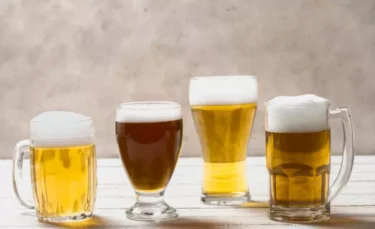
It is safer to avoid alcohol if you are on duloxetine as the combination may increase some side effects of the drug and may lead to potentially harmful interactions. Both alcohol and duloxetine can cause CNS depression, potentially leading to excessive sedation. Alcohol may also interfere with duloxetine’s ability to improve mood, reducing its therapeutic benefit. Additionally, since both are metabolised in the liver, using them together increases the risk of liver toxicity4.
Taking alcohol with duloxetine could cause:
Both the manufacturer (FDA label) and doctors strongly recommend limiting or avoiding alcohol, particularly if you have a history of liver disease or depression. Always check with your doctor before consuming alcohol during duloxetine treatment4.
I want to emphasise that when prescribed to take duloxetine, it is important to especially avoid drinking alcohol as it may potentially increase the risk of liver damage. Prioritising your health and adhering to your doctor’s recommendations will ensure the safest and most beneficial use of this medication.
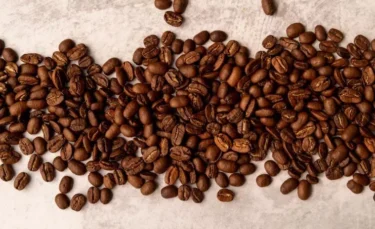
Keep an eye on your caffeine intake while taking duloxetine. Although caffeine doesn’t directly interfere with how the medicine works, it may worsen certain side effects, such as jitteriness, anxiety, or trouble sleeping, especially if you’re sensitive to stimulants. In some cases, too much caffeine may reduce duloxetine’s calming benefits by increasing restlessness or anxious feelings5.
To manage your caffeine intake:
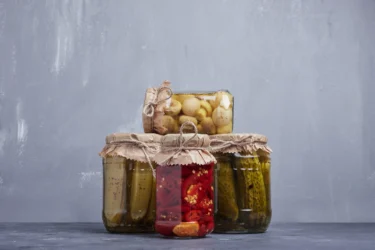
Although duloxetine is not a monoamine oxidase inhibitor (MAOI), some people worry about its interaction with high-tyramine foods. However, current research has not shown any significant risk, and duloxetine does not inhibit the MAO enzyme. That said, if you want to be cautious, it’s you may limit foods high in tyramine, such as:
If you are curious to know the drugs that may not work well with duloxetine, let’s find out. Always inform your doctor about all the medicines, supplements, or herbal products you currently take or are planning to take, to help avoid any possible interactions.
Taking duloxetine with other medicines for mental health issues may increase side effects or cause complications.
Some examples of such medicines include:
How to manage drug interactions?
Here are a few simple precautions to help manage drug interactions while on duloxetine:
NSAIDs could increase the risk of gastrointestinal bleeding when used with duloxetine, which could lead to:
How to manage this interaction?
Here are a few precautions to manage the interaction of NSAIDs with duloxetine:
Combining amphetamines with duloxetine may lead to side effects like:
How to manage this interaction?
These precautions may help you manage the interactions of amphetamines with duloxetine:
You need to know how supplements and herbs can interact with duloxetine. So, always discuss all supplement and herbal product use with your doctor7.
There are no specific reported interactions between duloxetine and most vitamins or minerals. However, it’s still important to inform your doctor about any supplements you take, as certain combinations may affect how well the medicine works.
Some herbal supplements may not be safe to take with duloxetine. For example, combining St. John’s Wort with duloxetine may increase the risk of serotonin syndrome, a potentially serious condition linked to excess serotonin in the body6. Kava, another herbal product, may increase the risk of liver damage when taken with duloxetine. While there is no strong evidence that these herbs reduce the effectiveness of duloxetine, they can increase its side effects or lead to harmful interactions.
Some tips on safe herbal usage:
If you feel nauseous or unwell while taking duloxetine, it is advisable to avoid heavy meals and spicy or greasy foods. Easily digestible foods can reduce stomach discomfort and make you feel more at ease. Always let your doctor know if your nausea persists or worsens.
Certain factors like an individual’s vaccination status, laboratory test requirements, and health history can influence the effect of duloxetine.
Based on available data, there are no known interactions between duloxetine and most vaccines. However, it is advisable to consult your doctor before taking a vaccine if you are on duloxetine.
Duloxetine is not known to interfere with common lab test results. However, if you have been scheduled for any tests, let your doctor know you are taking duloxetine for better interpretation of your test results.
Your past and present health conditions can influence the effect of duloxetine. It is advisable to share your full medical history with your doctor, especially if you are pregnant or plan to conceive or have or have had:
Some duloxetine side effects may specifically affect women and may vary from person to person:
Duloxetine may lead to certain side effects that are more commonly seen in men:
If you experience any of these symptoms, it is essential to consult your doctor and discuss your concerns openly.
Duloxetine may affect sexual health in both men and women. These effects can vary but may include:
Understanding how duloxetine may interact with certain foods, beverages, drugs and more supports better health and more effective use of the medication. It is important to consider your overall health and lifestyle when taking medication.
While on duloxetine, it is recommended you stay in touch with your doctor. Always share details of other medications and supplements you are taking with your doctor as they can influence your treatment. This allows your doctor to check for possible interactions, devise coping strategies, and adjust your treatment if needed.
The onset of duloxetine’s therapeutic effects varies, but many individuals may start experiencing improvement in their symptoms within 1 to 4 weeks after initiating treatment. However, it’s essential to consult with a healthcare professional for personalised guidance on the duration of duloxetine’s effectiveness.
Taking duloxetine during the third trimester of pregnancy may increase the risk of neonatal adaptation syndrome, which can cause symptoms such as tremors, irritability, feeding issues, and breathing problems in newborns9.
Speak to your doctor before using duloxetine during pregnancy to weigh the possible risks and benefits based on your health and your baby’s well-being.
Taking duloxetine at night is generally acceptable, but it’s advisable to follow your healthcare provider’s recommendation for the most effective and personalised dosing schedule. Always consult with your healthcare professional to ensure the dose timing aligns with your specific health needs.
Duloxetine and Wellbutrin should be used cautiously together because they affect different neurotransmitters in the brain. Taking them together may increase the risk of side effects or adverse reactions. Consulting a doctor may help manage potential drug interactions, ensuring a safer and more effective treatment plan10.
Taking duloxetine and gabapentin together requires caution because both medications can have central nervous system effects. The combination of these two medicines may increase the risk of side effects such as dizziness, drowsiness, or difficulty concentrating. Consulting a doctor is crucial to assess individual factors, minimise risks, and ensure a safe treatment plan.
Yes, fatigue is a common side effect of duloxetine. If you experience excessive tiredness or drowsiness while taking the medication, you should inform your doctor and discuss potential adjustments in dosage or alternative treatment options.
Yes, constipation is a recognised side effect of duloxetine. If you encounter persistent constipation while using duloxetine, it is recommended to consult with your healthcare provider for potential management strategies or adjustments to your treatment.
Duloxetine may contribute to increased energy levels in some individuals as it affects neurotransmitters. However, individual responses vary, and if you experience concerns about energy levels or fatigue while taking duloxetine, consulting your doctor is advisable for personalised guidance.
Duloxetine may not be suitable for individuals with bipolar disorder, as it can potentially trigger manic or hypomanic episodes. It is essential to discuss any history of bipolar disorder with a doctor before starting duloxetine to ensure an appropriate treatment plan.
Disclaimer: The information provided here is for educational/awareness purposes only and is not intended to be a substitute for medical treatment by a healthcare professional and should not be relied upon to diagnose or treat any medical condition. The reader should consult a registered medical practitioner to determine the appropriateness of the information before consuming any medication. PharmEasy does not provide any guarantee or warranty (express or implied) regarding the accuracy, adequacy, completeness, legality, reliability or usefulness of the information; and disclaims any liability arising thereof.
Pantoprazole is a medication that belongs to the drug group ‘proton pump inhibitor (PPIs)’, which are often prescribed by doctors for stomach acid-related issues. These commonly include health conditions like peptic ulcer disease, Zollinger-Ellison syndrome, NSAID-induced ulcer and gastroesophageal reflux disease (GERD), among others1. But like any other medicine, there are some do’s and don’ts with pantoprazole as well. Understanding these are key to safe usage and optimal results.
So, in this guide, we’ll talk about pantoprazole. What is it? Why is it needed? Which foods and drinks should be avoided while on this medication? We’ll also discuss drug and nutrient reactions that might occur. Plus, useful tips on food choices will be shared, which can help improve your treatment results. Lastly, preventive steps and monitoring measures are discussed to make the treatment safer for you.
Drawing from my observations and experience, I strongly recommend avoiding food items that may exacerbate gastroesophageal reflux disease (GERD) when undergoing medication. So, it might be best to refrain from consuming spearmint and peppermint while taking medications like pantoprazole.
Let’s begin the discussion with an overview of pantoprazole. We’ll discuss what it is, why it’s used and how it works. Then, delve into what food and drinks to avoid while taking this medication.
It’s a type of PPI (proton pump inhibitor) which doctors prescribe for some gastric health problems. These helps manage issues wherein too much acid is produced in the stomach, leading to certain health conditions such as-
Pantoprazole should ideally be taken 30–60 minutes before a meal, usually in the morning, for optimal proton pump inhibition. Pantoprazole can have adverse effects, including , headache, and upper respiratory tract infection. Thus, pantoprazole should only be taken with a doctor’s prescription.
Now, let’s talk about its uses1.
Pantoprazole inhibits proton pumps in stomach wall lining cells, known as parietal cells. They make and release hydrochloric acid into the stomach. Pantoprazole irreversibly inhibits the H⁺/K⁺ ATPase enzyme in the apical membrane of parietal cells, leading to suppression of acid secretion. So, it helps manage symptoms related to acid reflux, hyperacidity, or mucosal damage due to excess acid1.
As someone who has made observations and collected experience in this matter, I would suggest avoiding the consumption of orange juice while taking medications for gastroesophageal reflux disease (GERD), such as pantoprazole. Orange juice, due to its high acidic nature, may have the potential to exacerbate GERD symptoms. Thus, opting for alternative beverages with lower acidity might be a more suitable choice when taking GERD medications and minimise discomfort.
Certain food and drinks may worsen GERD symptoms even while consuming pantoprazole. To get the best out of your medication, avoid the following items:
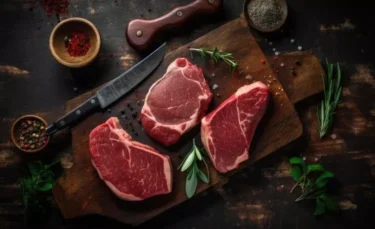
Acidic foods can worsen GERD. They stimulate your stomach to produce even more acid. Plus, they can irritate the lining of your oesophagus or reduce lower oesophageal sphincter (LES) tone, worsening reflux2. It’s a common myth that they cause more acid to be produced. Examples of acidic foods are:
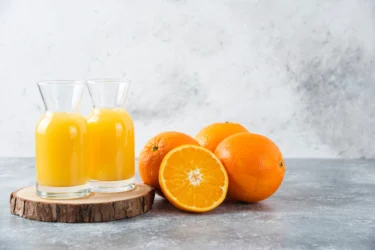
Fruits like oranges, grapefruits, and lemons, and their juices may cause irritation leading to worsening of GERD symptoms in some people.
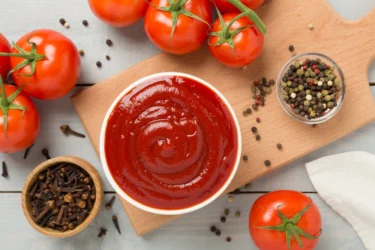
Tomato products like tomato sauce, canned tomatoes and ketchup are highly acidic. So, these can worsen GERD symptoms too.
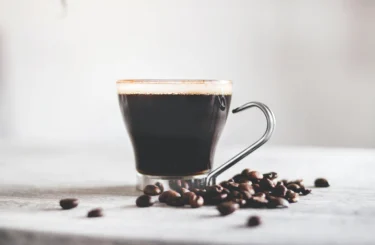
Caffeine boosts stomach acid levels and may relax the lower oesophageal muscles (LES). This can trigger GERD symptoms. Decaf options or herbal drinks can be helpful instead3,4.
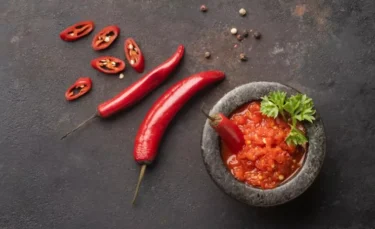
Spicy foods have materials like chili peppers, curry powder, hot sauces etc in them. These all can cause irritation to the oesophagus and fire up stomach acid, causing more heartburn2,3.
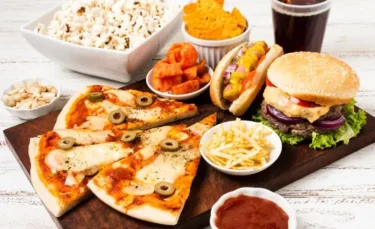
High-fat foods can slow digestion and induce acid reflux by relaxing LES. Some examples of high-fat foods to avoid are2,3:
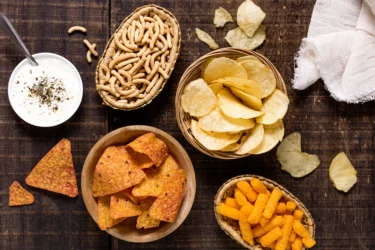
Food items such as chicken chunks, onion rings, and potato chips could make GERD symptoms worse.
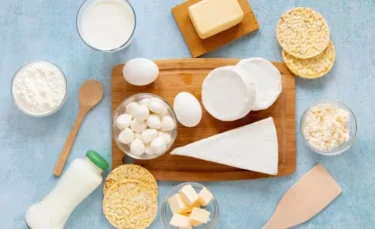
High-fat dairy like cream, cheese, butter, and whole milk might worsen GERD symptoms. Try low-fat dairy or other alternatives instead.
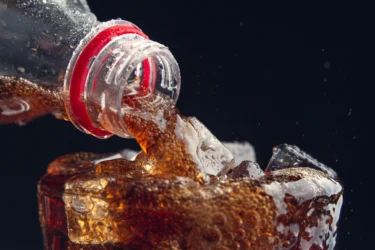
Bubbly drinks like soda and sparkling water can exacerbate GERD symptoms. The bubbles push up pressure in the stomach, spurring stomach contents to flow into the oesophagus3.

Alcohol use can worsen GERD symptoms by relaxing the LES which allows acid to reflux into the oesophagus and worsen GERD symptoms. It also delays gastric emptying, and can irritate the gastric mucosa, all of which exacerbate GERD symptoms. Cutting down on alcohol intake is advised when on pantoprazole. If needed, ask your healthcare provider about what safe levels of drinking are while on this medication5.
When on pantoprazole, it’s vital to know about potential drug and nutrient interactions. Always talk with your healthcare provider before starting any new medicines or supplements.
Pantoprazole could interact with certain medications affecting their usefulness or causing unwanted side effects. Let’s see what these are:
Examples and Effects
Always tell your healthcare provider about the medicines you’re currently on. This can help avoid harmful drug interactions.
Like other PPIs, long-term use of pantoprazole could interfere with the absorption of specific nutrients. This might lead to deficiencies. Here are some examples:
Discuss with your healthcare provider any concerns over potential nutrient interactions. Regular blood tests might be needed to monitor nutrient levels for those using pantoprazole long-term.
To boost overall digestive health and help manage GERD symptoms, a Mediterranean diet or low carbohydrate diet is preferred8. These foods can be included in your diet while on pantoprazole:
Foods with a neutral or slightly alkaline pH help strike a balance in stomach acid levels. They alleviate GERD symptoms. Some examples are:
Foods rich in fibre can boost digestion health and help prevent acid reflux. Some high-fibre options are:
Incorporate lean protein sources in your meal plan. These include:
Certain precautions need to be kept in mind while on pantoprazole to assure both safety and effectiveness. Keep the following points in mind:
Stay alert to side effects, both minor and serious ones like diarrhoea, nausea, headaches and allergic reactions. Always inform your healthcare provider of any long-lasting or severe symptoms.
Severe or persistent diarrhoea could signal Clostridioides difficile-associated diarrhoea, a rare but serious complication of long-term PPI use1.
Acute interstitial nephritis (AIN), a condition affecting the kidney, is also a rare but documented adverse effect of PPIs including pantoprazole.
Correct dosage, duration of treatment and precautionary measures vary as per the specific populations:
Knowing which foods and drinks to avoid, how to monitor medicine interactions, and adopting healthy eating habits are essential when on pantoprazole for maximum benefits and safety. Always work together with healthcare providers to get personalized advice and recommendations, ensuring that pantoprazole remains an effective and well-tolerated treatment for your needs.
How long you are on pantoprazole treatment hinges on your specific health problem and how well you respond to therapy. Always stick to the duration of your treatment as advised by your doctor.
Weight gain is not listed as a common side effect in pantoprazole studies. But everyone’s body reacts differently. If you see great changes in your weight, talk to your healthcare provider.
The right pantoprazole dosage varies based on the individual and the condition treated. Always follow your doctor’s advice on dosage.
Take pantoprazole as directed by your doctor. Usually, it is taken once in the morning 45 minutes before breakfast. Do not break, crush, or chew the tablet/capsule as this can impact its effectiveness.
Disclaimer: The information provided here is for educational/awareness purposes only and is not intended to be a substitute for medical treatment by a healthcare professional and should not be relied upon to diagnose or treat any medical condition. The reader should consult a registered medical practitioner to determine the appropriateness of the information and before consuming any medication. PharmEasy does not provide any guarantee or warranty (express or implied) regarding the accuracy, adequacy, completeness, legality, reliability or usefulness of the information; and disclaims any liability arising thereof.
Discussing the pleasures and health benefits of certain solo endeavours may raise many eyebrows, such as in the case of masturbation and its association with prostate cancer. It is a malignant tumour of the prostate gland and is one of the main causes of death due to cancer in men worldwide. It is the third most common cancer in Indian men and has been linked to risk factors like vasectomy procedures, obesity, diabetes mellitus, and poor BMI1. Men will be glad to know that studies suggest that frequent ejaculation through intercourse or masturbation has health benefits, and lowering the risk of prostate cancer is one of them2. Contrary to popular belief, masturbation, if done in moderation, does not increase the risk of prostate cancer.
Masturbation is a common sexual act that has been misunderstood and seen as taboo by society. It involves self-stimulation of the genitalia to achieve sexual release, orgasm, or ejaculation and feel sexual pleasure. People of all genders and sexual orientations can engage in this private activity. It can be both self or partner-assisted.
The ejaculate in men is essentially semen, which contains a large portion of the seminal fluid, a sperm-nourishing liquid. The prostate gland, which is found in men just below the urinary bladder, is responsible for producing this seminal fluid. Hence, the close link between masturbation and prostate cancer cannot be ignored2.
Regular masturbation can be beneficial for the prostate’s health, which can thereby reduce the risk of prostate cancer. Here are a few benefits of masturbation:
One of the most extensive studies was published in European Urology in 2016, in which over 31,000 males were followed for over 20 years. The researchers concluded that frequent ejaculators (irrespective of masturbation or intercourse) had lower prostate cancer rates than other males4.
The precise reason for the positive relationship between masturbation and prostate cancer is not entirely understood since the cancer of the prostate gland is multifactorial. Studies show prolonged contact between the cells of the prostate gland and their secretions, such as seminal fluid, which contains sufficient levels of zinc, phosphates, citric acid, and the male hormone di-hydrotestosterone (DHT), may accelerate the growth of cancer5. Hence, it may be derived that masturbation reduces the contact between the cells and fluids of the prostate gland. However, this fact has yet to be proven.
There are several factors as mentioned below that affect the risk of developing prostate cancer. While some of these factors are beyond our control, knowing them can still help men make wise choices regarding their health6.
While the research on the specific benefits of masturbation for prostate health is still developing, several studies have been conducted to provide an overview of the psychological and physiological health advantages of masturbation and other sexual behaviours that cause ejaculation in men5,7.
The following are a few potential advantages of masturbation for prostate health:
Masturbation and prostate cancer have an intricate relationship. As explained, prostate cancer risk can be decreased by ejaculations through sexual acts like masturbation5,7.
Masturbation involves external genital stimulation, which indirectly affects the prostate gland. This stimulation may keep the gland active, induce the healthy formation of seminal fluid, and drain the fluid periodically. All of these processes are natural and necessary to maintain the health of a secretory gland5,7.
Sexual activity, including masturbation, improves blood flow to the genital area. An increase in blood flow can help the prostate gland function optimally by supplying it with oxygen and other vital nutrients5,7.
Masturbation is a private, intimate, fulfilling, and pleasurable sexual activity that can help people unwind and reduce stress. Prostate difficulties and other health problems have been related to chronic stress. Masturbation may indirectly improve prostate health by lowering stress levels5,7.
Masturbation gives people a chance to know their bodies, sexual preferences, and reactions. Understanding sexual desires and pleasure can help with sexual self-awareness. Accepting your own sexuality and engaging in sexual behaviours that are pleasurable and satisfying, can both be beneficial for your sexual well-being5,7.
Studies suggest that infrequent ejaculation can improve sperm count and volume, while frequent ejaculation can often enhance sperm quality, morphology, and DNA fragmentation (breakages and patterns in the genetic material of the sperm)8.
Following an orgasm, your body releases oxytocin, a stress-reducing hormone, and blocks cortisol, a stress-inducing hormone. Research9 says that orgasms shorten the time it takes to fall asleep and enhance the quality of sleep.
The inverse relationship between masturbation and prostate cancer clearly requires more scientific studies. In a country like India, it is still difficult for physicians to record a detailed history of self-stimulation or masturbation. There is a long way to go before doctors start prescribing ‘masturbation’ for better sexual health. The majority of factors that increase the chances of prostrate cancer, such as age and family history of the illness, are unchangeable. Hence, if there exists a natural and pleasurable way of reducing the risks of prostate cancer, then why not try it?
The frequency of ejaculations varies greatly from person to person and is affected by factors like age, health, and sexual choices. There is no set quota or suggested frequency for ejaculation. However, excessive acts of masturbation could be bad.
An infection or inflammation of the prostate gland, known as prostatitis, is caused by bacteria or other elements. In some people, excessive intercourse, including many ejaculations, may cause momentary pain or annoyance in the prostate or pelvic region. A proposed reason for the symptoms of chronic Prostatitis/Chronic pelvic pain syndrome is frequent ejaculation-associated free radical and lactic acid accumulation, which results in noninfectious inflammation and muscle weakness, not prostatitis10.
Age, sedentary lifestyle, chronic stress, and processed food/ red meat are a few aggravating factors in prostate cancer. If you have a family history of prostate cancer, it is best that you stay away from these.
Maintain a healthy weight, avoid processed foods with preservatives, hydrate yourself better, exercise regularly and avoid self-medicating with hormonal supplements that may derange the levels of testosterone to keep your prostate healthy
-Difficulty in the start of urination
-An interrupted flow of urine
-The desire to urinate multiple times, especially at night
-Pain while urinating
-Mild specks of blood in the urine and the semen
Disclaimer: The information provided here is for educational/awareness purposes only and is not intended to be a substitute for medical treatment by a healthcare professional and should not be relied upon to diagnose or treat any medical condition. The reader should consult a registered medical practitioner to determine the appropriateness of the information and before consuming any medication. PharmEasy does not provide any guarantee or warranty (express or implied) regarding the accuracy, adequacy, completeness, legality, reliability or usefulness of the information; and disclaims any liability arising thereof.
Cancer appears as a solid tumor (lump) that is malignant1. Penile cancer is a cancer of the penis (the external part of the male urinary and reproductive system). The cells present in the tissues of the penis give rise to different types of penile cancer.
Depending upon the type of cell affected in the penis, the type of penile cancer is determined. Following are the type of penile cancers: Squamous cell cancer, Melanoma, Basal cell cancer, Adenocarcinoma (Paget’s disease of the penis), and Sarcoma2. Penile cancers can start in any part of the penis.
Most commonly it has been found to begin on the head or foreskin of the penis. This cancer goes untreated in many individuals since it is associated with psychological distress. Males suffering from this type of cancer often delay seeking medical opinion because they fear and suffer embarrassment4 . Males who are over 55 years are most often detected with penile cancer. However, people who are under the age of 40 can also develop this type of cancer.
Did you know?
Irrespective of the type of penile cancer, mostly the foreskin and the tip of the penis (glans) get affected. Therefore, penile cancer symptoms are first visible on this part of the penis5.
Signs of penile cancer are listed as under:
The following are the symptoms of penile cancer:
Penile cancer is a rare form of cancer that starts in the tissues of the penis. The exact cause of penile cancer is not clear, but several factors have been identified that may increase the risk of developing this type of cancer:
Risk factors are not the factors causing penile cancer but these factors increase the chance of occurrence of developing penile cancer. Below are some of the risk factors3:
Upon visiting the doctor following diagnostic protocols are carried out to understand the developing penile cancer in an individual. The mean age of diagnosis of penile cancer is at the age of 60 years4.
Treatment strategy for penile cancer depends on the size of the tumour, cancer stage, spread of the cancer, and its likelihood of relapsing after the treatment3. Often, treatment options are combined to have maximum therapeutic effect, following is a list of treatments that might be employed for treating penile cancer:
In my experience, a healthy skin cell may become a cancer cell when you have penile cancer. Uncontrolled cancer cell growth results in the formation of a tumour that pushes the healthy cells aside. As time passes, cancer cells have the potential to invade further organs and tissues in your body. I strongly recommend routine complete body checkups for those who have a family history of cancer3.
Dr. Rajeev Singh, BAMS
Following are the possible preventive measures7:
Penile cancer complications are like any complication that arises due to surgical incidents such as:
Did you know squamous cell carcinoma (SCC) makes up 95% of penile cancer cases? This type of cancer develops in the epithelium that is the top layer of your skin. Different types of tissues may develop other forms of penile cancer: basal cell carcinoma (BCC), melanoma, and sarcoma. Out of these, the malignancy melanoma is more dangerous3.
Dr. Siddharth Gupta, B.A.M.S M.D (Ayu)
One should visit the doctor if the following conditions are observed. As a regular practice, one should look for the mentioned changes that occur in and around the penis:
Penile cancer, though rare, is a serious condition that requires timely recognition and treatment. The stigma, fear, and lack of awareness surrounding male reproductive health often lead to delayed diagnoses, affecting outcomes. Understanding the symptoms, risk factors, and causes, especially the role of HPV and poor hygiene can empower men to take preventive steps early on.
Fortunately, with advancements in diagnostics and treatment, many cases can be managed effectively when detected in time. Maintaining proper genital hygiene, avoiding tobacco, practicing safe sex, and not ignoring unusual symptoms are key pillars of prevention. If you notice any persistent changes in or around the penis, do not hesitate to consult a doctor. Early action can make a significant difference, not just in treatment success but also in overall well-being and quality of life.
As soon as your doctor confirms penile cancer, treatment strategies should be discussed with the doctor.
Most men can typically have an erection and continue their sexual life normally after the cancerous area has been removed (wide local excision)9. Most men can typically have an erection and continue their sexual life normally after the cancerous area has been removed (wide local excision)9.
Penile tissue is kept alive during many cancer therapies. This means that your penis finally recovers to resemble its pre-treatment appearance almost exactly. You’re still able to urinate when standing10.
A surgical oncologist, a urologist who focuses on urinary tract issues, a medical oncologist, and a radiation oncologist are frequently on a penile cancer team.
This occurs often 7 to 14 days following your operation11.
Disclaimer: The information provided here is for educational/awareness purposes only and is not intended to be a substitute for medical treatment by a healthcare professional and should not be relied upon to diagnose or treat any medical condition. The reader should consult a registered medical practitioner to determine the appropriateness of the information and before consuming any medication. PharmEasy does not provide any guarantee or warranty (express or implied) regarding the accuracy, adequacy, completeness, legality, reliability or usefulness of the information; and disclaims any liability arising thereof.
Kayam churna is an Ayurvedic preparation readily available at a chemist’s store. A lot of Indians use kayam churna for various stomach-related problems. In the Indian traditional medicine systems such as Ayurveda, Siddha, Unani and Naturopathy, the use of ‘churnas’ has been recorded. Ayurveda defines churna as a fine powder of one or more ingredients in dried form. Kayam churna is an Ayurvedic formulation. It is a balanced blend of seven incredible Ayurvedic ingredients, namely Senna leaves, Mulethi, Ajwain, Black salt, Nishoth, Haritaki and Svarjikshara. Senna leaves (Cassia angustifolia) are the major ingredient of kyama churna. Kayam churna may work against a vast array of stomach disorders like diarrhoea, heartburn, constipation, gas, peptic ulcer and acid-reflux disease1. Let us discuss the health benefits of kayam churna, its nutritional composition, properties, uses and more.
Kayam churna may contain the following ingredients:
The bioactive compounds may include tannins, glycosides, flavonoids, alkaloids, steroids, saponins, and phlobatotannins1.
Kayam churna may have the following properties1:
The potential uses of kayam churna may be described as follows:
Kayam churna powder may provide instant relief from constipation. As per a study1 done by Gupta et al. in 2022, the main ingredient of kayam churna is senna leaves. It may play a major role in correcting bowel movements. Kayam churna contains seven herbs, making it one of the most potent natural preparations for constipation. It may increase muscular movement in the stomach, making the food move faster through the intestine. This may ease constipation and may help ease bowel emptying2. However, if you suffer from constipation, consult a qualified doctor and do not self-medicate.
It is not uncommon to complain about gas in the stomach, which may lead to a painful bloating sensation. All the ingredients of kayam churna may help combat gas formation and relieve bloating. Senna leaves contain anthraquinones, which may have anti-bacterial activity and help remove harmful bacteria from the stomach and increase good bacteria. This may lead to a healthy environment in the stomach and alleviate discomforts such as gas and bloating2. However, more studies on humans are needed to suggest the uses of kayam churna for gas and bloating. Therefore, if you have any such stomach issues, consult with your physician and only use it if advised.
Kayam churna is a herbal preparation containing mulethi, ajwain and senna leaves. It may act as a dietary supplement for various digestive problems. It may help boost the functions of the digestive system. It may help break down the food in the stomach and help it to get digested so that all the nutrients get absorbed into the body. It may also help with indigestion1. However, this information is insufficient; more human studies are needed to support the benefits of kayam churna in digestion.
Jaundice may be caused due to increased bilirubin levels in the liver. Ayurveda has been advising the use of dried senna leaves for managing jaundice. Senna leaves are the main ingredient of kayam churna, which may help regulate pitta production in the liver. It may act as a stimulant, which may help remove pitta from the body. Hence, regular intake of kayam churna ingredients might help avoid the occurrence of jaundice2. However, more human studies are required to support the use of kayam churna for jaundice. If you have jaundice, take medical treatment and do not self-medicate.
Though studies show the potential uses of kayam churna in health conditions, these are insufficient, and there is a need for further studies to develop the scope of the benefits of kayam churna on human health.
You may use kayam churna:
You should consult a qualified doctor before using kayam churna in large quantities. Do not discontinue or replace an ongoing modern medical treatment with an ayurvedic/herbal preparation of kayam churna without consulting an Ayurvedic doctor. They will guide you with its form and dosage per your health condition.
Kayam churna in minimum amounts is considered safe. No major study reports the kayam churna side effects. However, the individual ingredient, if used alone in larger quantities, may have side effects as mentioned below:
If any side effects are seen after using kayam churna, immediately consult your doctor and get proper treatment.
Taking kayam churna in small quantities may be safe. However, the following precautions are necessary:
No study reports the interaction of kayam churna with other medicines. Therefore, more human studies are needed to study the safe use of kayam churna in humans. Consult an Ayurvedic doctor; they will guide you to a safe way to use it.
No. Kayam churna should not be used by lactating mothers. It may induce purgation (involuntary emptying of the bowel) in infants4.
Kayam churna may relieve constipation, act as a laxative, enhance digestion, relieve bloating, reduce flatulence, peptic ulcers and acid reflux1,3.
Kayam churna contains mulethi (licorice root). A heavy dosage of mulethi during pregnancy may cause premature birth and other health problems in the baby. Therefore, pregnant women should avoid kayam churna4.
Disclaimer: The information provided here is for educational/awareness purposes only and is not intended to be a substitute for medical treatment by a healthcare professional and should not be relied upon to diagnose or treat any medical condition. The reader should consult a registered medical practitioner to determine the appropriateness of the information and before consuming any medication. PharmEasy does not provide any guarantee or warranty (express or implied) regarding the accuracy, adequacy, completeness, legality, reliability or usefulness of the information; and disclaims any liability arising thereof.
Halim seeds, also known as garden cress seeds, are tiny reddish-brown seeds packed with nutrition and health benefits. Used for centuries in traditional medicine and cooking, they have been valued for their medicinal properties and rich nutrient profile.
These seeds come from Lepidium sativum, an edible herb belonging to the Brassicaceae family. Originally native to Egypt, the plant is now cultivated worldwide, including in India, where it is primarily grown in Madhya Pradesh, Gujarat, Rajasthan, and Uttar Pradesh. The plant produces light pink or white flowers and tiny seed pods, which are harvested for their seeds.
Halim seeds are also known by different names across regions, such as Holan, Chandrasura, Aliv seeds, and garden cress. With their impressive nutritional value, they have gained popularity as a superfood. Let’s explore the numerous health benefits these tiny seeds have to offer1.
Halim seeds are packed with the goodness of carbohydrates, proteins, fibers and minerals like calcium, phosphorus, zinc, etc. and phytochemicals like flavonoids, phenols, lectins, tannins, glycosides, etc. The nutritional components and bioactive components of Halim seeds are mentioned below:
Scientifically proven properties of Halim seeds include:
Based on my experience, I have found that the extract from halim seeds shows promising potential as an antifungal agent. It has been observed to effectively inhibit the growth of various fungal species. Halim seeds may possess strong antifungal properties, which could be beneficial in the management of fungal infections.
Dr. Siddharth Gupta, B.A.M.S, M.D (Ayu)
Some of the potential benefits of Halim seeds are described below:
Type 2 diabetes is a metabolic disorder characterised by hyperglycemia (an increase in blood glucose levels) with reduced or total loss of insulin (a hormone that regulates blood glucose in the body) function.
Qusti et al. conducted a study4 in 2016 to assess the effects of Halim seeds in diabetic rats. The study showed that Halim seeds showed a significant decrease in blood glucose levels. This effect was attributed to the inhibition of molecules which inhibit the insulin pathway. This indicates that Halim seeds may help in managing diabetes. However, we need more studies to support these claims in humans.
Strong bones reduce the risk of fractures and protect vital organs like the brain and heart from damage. To build strong bones and promote bone healing in fractures, calcium and Vitamin D play an important role.
Dixit et al. conducted a study1 on rats in 2020, stating that Halim seeds may positively impact bone health and help promote bone healing in case of fractures due to the presence of calcium and phosphorus in high amounts. This indicates that Halim seed consumption may have a positive impact on bone fractures, provided more human studies are done to support these claims.
Obesity is defined as an excessive or abnormal accumulation of fat in the body. A Body Mass Index (BMI)>25 kg/m2 is defined as overweight, and >30 kg/m2 is considered obese. Reducing body weight may help in managing obesity.
Dixit et al. conducted a study4 in 2020 to assess the effect of Halim seeds on obese rats; the study findings supported the use of Halim seeds for weight loss. This indicates that Halim seed consumption may help manage obesity by reducing weight. However, we need more studies to support these claims in humans.
Breast cancer is one of the most common cancers affecting women worldwide. Literature reviews support the use of dietary agents and a reduced risk of breast cancer.
Mahassni et al. conducted a literature review5 in 2013, stating Halim seeds contain phytochemicals like organo-sulfur compounds and phytosterols, which have antioxidant and anti-inflammatory effects and may inhibit cell multiplication, arrest the cancer cell cycle and cause apoptosis (cell death of cancer cells). This indicates that Halim seeds may exert an anti-cancer effect on breast cancer. However, there is limited evidence, and we need more studies to support these claims in humans.
Hyperlipidemia or hyperlipoproteinemia is defined as an increase in total cholesterol, a reduction in low-density lipoprotein or bad cholesterol and an increase in high-density lipoprotein or good cholesterol.
Yousef et al. conducted a study6 in 2014 to assess the effects of Halim seeds on hyperlipidemia; this study states that Halim seeds positively impacted lipid profiles. This effect is attributed to the inhibition of an enzyme, which aids the formation of cholesterol. This indicates that the consumption of Halim seeds may help manage hyperlipidemia. However, more studies should be conducted to claim these effects with more reliability.
In my practice, I have observed that halim seeds may exhibit significant antidiarrheal properties. It is believed to achieve this by inhibiting gastrointestinal propulsion and fluid secretion, resulting in a decreased frequency of bowel movements and reduced fluid loss.
Dr. Rajeev Singh, BAMS
Though there are studies that show the benefits of Halim seeds in various conditions, these are insufficient, and there is a need for further studies to establish the true extent of the benefits of Halim seeds on human health.
You must consult a qualified doctor before taking any herbal supplements. Do not discontinue or replace an ongoing treatment of modern medicine with an Ayurvedic/herbal preparation without consulting a qualified doctor.
According to a study9, it is stated that in addition to the nutritional components, Halim seeds also contain anti-nutrients like phytates and oxalates, which may interfere with the absorption of nutrients.
However, if you experience any adverse reactions to Halim seeds, it is advised to discontinue their intake and immediately contact a doctor or your Ayurvedic physician who has prescribed them. They will be able to guide you appropriately.
Consuming Halim seeds is okay if taken in moderate amounts. However, general precautions must be followed in the following conditions8:
The safety data regarding the use of Halim seeds in pregnant and breastfeeding women, the elderly and infants is limited; therefore, it is advised to take necessary cautions if you plan to add this herb to your dietary routine. It is advised to follow precautions and consume it in moderate amounts.
Consuming Halim seeds is contraindicated in the following situations:
Also Read: 14 Amazing Health Benefits of Pumpkin Seeds!
However, you must always seek the advice of your Ayurvedic physician about the possible interaction of Halim seeds with other drugs and follow the prescription thoroughly, as they will know your health condition and other medications you are taking8.
Also Read: Chia Seeds: Uses, Benefits, Side Effects, and More!
Yes, animal studies3 show that Halim seeds may help in weight loss. However, we need more studies to support these claims in humans. Therefore, it is advised to consult a doctor for proper treatment in case you have any weight-related issues.
The safety data regarding the use of Halim seeds in pregnancy is limited; therefore, it is advised to take necessary cautions if you plan to add this herb to your dietary routine. It is advised to consult a doctor for proper advice.
Yes, Halim seeds, due to their high iron content, may help in managing iron-deficiency anemia.
Disclaimer: The information provided here is for educational/awareness purposes only and is not intended to be a substitute for medical treatment by a healthcare professional and should not be relied upon to diagnose or treat any medical condition. The reader should consult a registered medical practitioner to determine the appropriateness of the information and before consuming any medication. PharmEasy does not provide any guarantee or warranty (express or implied) regarding the accuracy, adequacy, completeness, legality, reliability or usefulness of the information; and disclaims any liability arising thereof.
Breast cancer is one of the most common cancers in women. It may also occur in men, although very rare. Breast cancers can start from any of the different parts of the breast1. The breast is an organ composed mainly of glands, ducts and fatty tissue. In women, the breast makes milk for feeding newborns and infants.
The most common types of breast cancer are2:-
The cancer cells begin in the ducts and then grow outside the ducts into other parts of the breast tissue. Invasive cancer cells can also spread or metastasise, to other parts of the body.
The cancer cells begin in the lobules and then spread from the lobules to the breast tissues that are close by. These invasive cancer cells can also spread to other parts of the body.
There are other types of breast cancers as well, which a doctor usually diagnoses with the help of lab tests and biopsies.
Breast cancer must not be left untreated once diagnosed. The treatment for breast cancer comprises surgery, chemotherapy and radiation therapy. Proper diet and food supplements help in combating and overcoming, partially or otherwise, the side effects of the treatment cycle, especially chemotherapy and radiation.
Good nutrition is the key for cancer patients throughout the various phases of treatment and after. The treatment may affect the way your body metabolises certain foods and uses nutrients and this varies for each individual.
During the treatment process, your diet must help build up your strength. You must eat high protein, high-calorie foods which will promote the following-
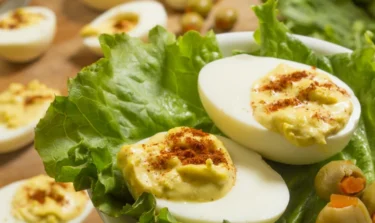
If you had surgery, chemotherapy or radiation therapy, you need a lot of protein to feel fit and fight off infections. The body loses substantial immunity in the process of breast cancer (and other cancer) treatment. Fish, poultry, lean meat, eggs, low-fat dairy products, nuts and nut butter, dried beans, peas, lentils and soya foods are all good sources of protein.
In my opinion, depending on whether you are vegeterian or follow other diets, increase your consumption of poultry, fish, and legumes like beans and lentils for a healthy source of protein. Scientists suggest daily protein consumption may help cope with breast cancer3. One to two servings of soy food per day, such as tofu, edamame, and soy milk, may also be included assuming soy is used in moderation.
Dr. Rajeev Singh, BAMS
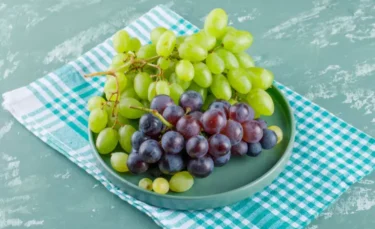
Grapes are a rich source of the antioxidant resveratrol, which has the potential to possibly stop cancer from starting in the breast4. You must eat grapes with their skin intact as it has the most resveratrol.
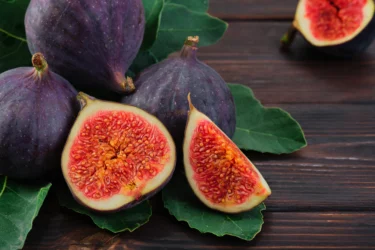
These have always been popular for their medicinal properties. They contain high levels of the flavonoid quercetin beneficial for lung and colon cancers5. Figs can reduce inflammation which is the major cause of cancer.
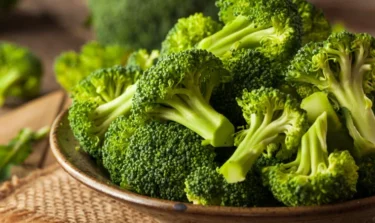
Cruciferous vegetables must be included in your regular diet. Broccoli has a high amount of a phytochemical called sulforaphane, which is a cancer-fighting plant compound6. These vegetables are effective sources of nutrition and also boost immunity.
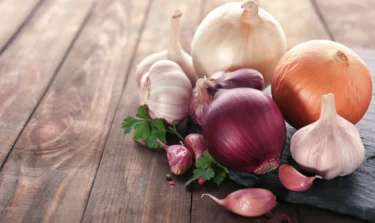
The antimicrobial and antitumor properties of garlic and onion have been known for over 1000 years. They must be part of your daily diet.
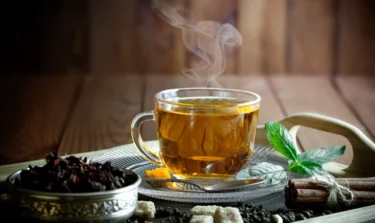
Tea (both green and black) has active antioxidants that keep the harmful effects of free radicals in check, which cause cellular damage7. Fresh tulsi tea can be a good choice.
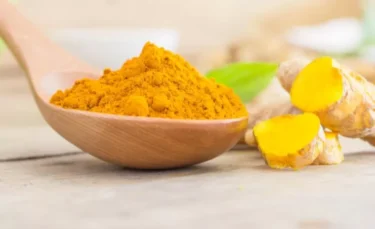
It is already an integral part of Indian foods. Curcumin I, II and III inhibit carcinogenesis and have proven anti-inflammatory properties. It is also an antitumour agent8.
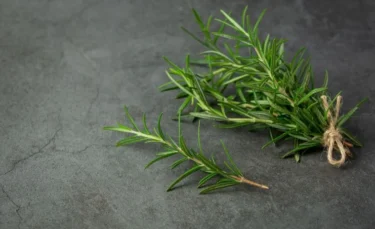
This herb is rich in carnosol, a phytochemical that can slow the growth of cancer cells, strengthen the immune system and limit the production of cancer-related hormones. It acts as an antioxidant and can be included in your diet during and after breast cancer treatment9.
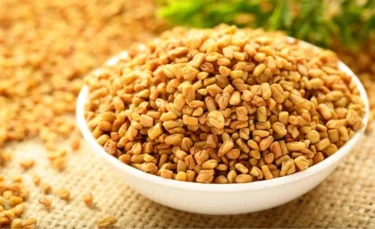
This ingredient in every Indian kitchen helps inhibit tumour cell growth. It is useful for patients with breast cancer and it has anticancer potential10. You may include it in your diet during and post-treatment.
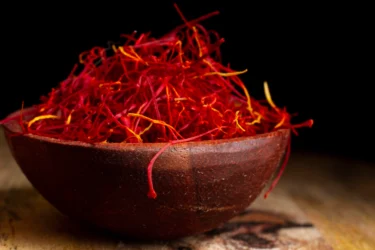
This exotic flower product has excellent inhibitory properties against cancer cells11.
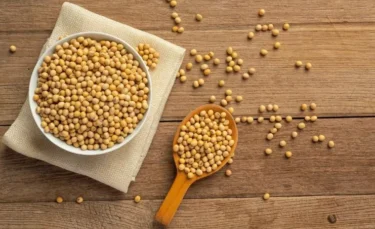
Nutritional properties of soya milk and other soya products make them preferred inclusions in your breast cancer diet.
If you ask me, roughly 25 to 30 grams of fibre should be taken daily. To my knowledge, whole grains are rich in vitamins, minerals, phytochemicals, fibre, and complex carbs. According to a study12, eating a lot of fibre may keep you away from breast cancer and other hormone-dependent tumours. Make sure that at least 50% of the grains in your diet are whole grains, such as brown rice for dinner or whole-grain bread for lunch.
Dr. Siddharth Gupta, B.A.M.S, M.D (Ayu)
Apart from the usual culprits like sugary foods, fatty foods and processed and preserved food, if you suffer from breast cancer, make sure you avoid the following:
The most important part of breast cancer treatment is a regular follow-up, maintaining a healthy lifestyle and following a good diet. Apart from keeping to a diet rich in proteins, minerals, vitamins and nutrients, you must always be well hydrated. Drink plenty of water, exercise and keep your weight in check, as fat and obesity are inimical for breast cancer. Form a habit of taking small meals rather than heavy ones, spaced throughout the day. Do enough activities caring to avoid stress on the arm where the axillary nodes have been surgically removed.
Your diet should be such that you eat enough nutrients to keep your body strong. A balanced diet consisting of fruits, vegetables, grains, beans, nuts, seeds, meats/eggs and dairy products is ideal. Talk to your doctor about any additional supplements that you may need.
Cruciferous vegetable-based juices, i.e. juices that contain vegetables like cabbage, spinach or any other belonging to the family of cruciferous vegetables containing loads of vitamin A.
You may go for any of these juice combinations:
– Orange, carrot, turmeric.
– Green apple, beetroot.
– Beetroot, carrot orange, cucumber.
Make sure to consume freshly prepared juices and not packaged ones. Whole fruits are always better than juices because they include all the fibre content.
Eggs are rich in powerful antioxidants, lutein and zeaxanthin. It inhibits cancer cell growth in breast cancers. It is good to have an egg a day unless you suffer from any other health conditions and must avoid it.
Berries, broccoli, tomatoes, walnuts, grapes and other coloured and leafy vegetables, fruits and nuts from the list. All plant foods that contain phytochemicals typically comprise foods for fighting your battle against breast cancer naturally.
Disclaimer: The information provided here is for educational/awareness purposes only and is not intended to be a substitute for medical treatment by a healthcare professional and should not be relied upon to diagnose or treat any medical condition. The reader should consult a registered medical practitioner to determine the appropriateness of the information and before consuming any medication. PharmEasy does not provide any guarantee or warranty (express or implied) regarding the accuracy, adequacy, completeness, legality, reliability or usefulness of the information; and disclaims any liability arising thereof.
A lipoma is a round or oval-shaped tissue mass that develops right under the skin. It composed of fat and moves easily when touched and rarely causes any discomfort. Lipomas can form in any body part, although the back, torso (trunk), arms, shoulders and neck are the most common parts.
Lipomas are slow-growing, soft tissue tumours that are typically benign (non-cancerous). In some cases, they may be mistaken for liposarcomas, which are rare malignant tumours; however, liposarcomas usually present differently and require specialist evaluation2.
Most lipomas don’t require treatment unless symptomatic. If a lipoma bothers you, you can consult a doctor and get it operated on.
According to healthcare professionals, the exact cause of lipoma development remains unclear. However, they often have a genetic link, if a family member has a lipoma, your risk of developing one is higher.
Several conditions are also known to be associated with the formation of multiple lipomas, such as:
Lipomas are usually not painful, although they can be bothersome if they push against a nerve or form near a joint. Many patients with lipomas do not experience any symptoms. Lipomas are typically encapsulated and they do not disseminate to the surrounding tissues.
While scientific evidence supporting the effectiveness of home treatments for lipomas is limited, some traditional practitioners believe that certain herbs and plant-based ingredients may offer benefits for managing the condition. Below is a list of popular natural remedies to consider but keep in mind that none of these can cure or prevent lipomas.
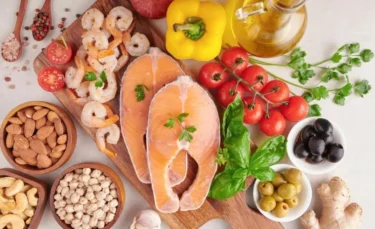
To support your body and reduce inflammation, include healthy fats, especially omega-3 fatty acids, in your meals. These essential fats are known to calm inflammation and promote overall wellness. At high enough levels, omega-3s help reduce inflammatory compounds in the body, such as cytokines and reactive oxygen species, which may play a role in fatty tissue growth.
Natural sources of omega-3 fatty acids include wild-caught salmon, sardines, flaxseeds, walnuts, chia seeds, and hemp seeds. You can eat them directly or use their oils in cooking or homemade remedies. When used consistently, these nutrient-rich fats can support the body’s natural balance and may help reduce discomfort linked to lipomas5.
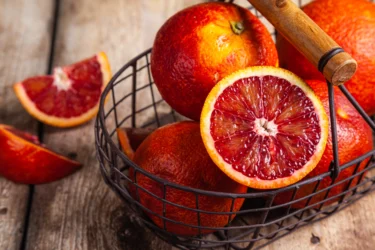
Bioactive compounds found in Moro orange extract (found in blood orange) have demonstrated lipolytic effects, meaning they help break down fat cells. Studies6 suggest that these compounds, particularly anthocyanins like cyanidin-3-glucoside, may support the reduction of abdominal fat by enhancing fat metabolism and reducing the accumulation of fat in adipose tissue. This makes Moro orange extract a potential natural aid in managing localized fat deposits, including those seen in conditions like lipomas.
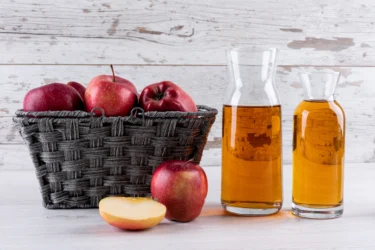
Apple cider vinegar is rich in acetic acid, has been studied for its potential to reduce fat accumulation and support metabolism. Research7 on obese rats and mice suggests that acetic acid may help prevent fat buildup in the body. To gently support your system, consider a daily detox drink that includes apple cider vinegar along with natural ingredients like ginger and raw honey. This combination may aid in overall detoxification and offer subtle support in managing fatty growths like lipomas.
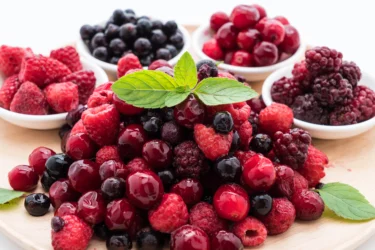
Adjusting your diet may help support the body’s natural balance in individuals with lipomas. Brightly coloured fruits and vegetables are rich in antioxidants, which may help lower fat levels in the blood and reduce oxidative stress. Prioritise foods like berries, leafy greens, and carrots for their vibrant nutrient content8,9.
Focus on eating natural, minimally processed foods to reduce exposure to environmental toxins and synthetic additives. Lastly, reduce alcohol consumption and avoid smoking, as both can negatively impact overall health and potentially worsen fatty tissue imbalances.
Consult a doctor if you notice a skin outgrowth, lump, or knot beneath your skin. It’s critical to get it checked and rule out any dangerous illnesses like liposarcoma (a type of cancer)2.
If you have a lipoma and experience any symptoms, such as acute discomfort, consult the doctor immediately. In case your lipoma is developing quickly (over weeks), feels firm or doesn’t move as readily when touched, you must seek medical attention. Your physician will physically examine the lipoma to determine the right treatment for it.
Also Read: Natural Home Remedies for Blood Clots
Lipomas are common and affect millions of individuals. While they can be bothersome or cosmetically unappealing, they rarely lead to serious health problems. Most lipomas don’t require treatment, but it’s important to have them evaluated by a healthcare professional. If a lipoma causes pain or shows rapid growth, be sure to consult your doctor. When removal is necessary, lipomas are typically taken out through minimally invasive surgical procedures.
Lipomas can form in any part of the body. Although multiple lipomas can grow, most people only have one. These mostly form just beneath the skin on the following areas:
-Arms or legs
-Back
-Neck
-Shoulders
-Trunk (chest and torso)
-Forehead
If a lipoma causes discomfort or concern, the doctor can surgically remove it. Lipoma removal is a simple and quick procedure and in most cases, patients are able to return home the same day. As an alternative, liposuction may be considered. In this procedure, a physician uses a thin, hollow instrument to extract fatty tissue from the lump. The choice of treatment depends on the size, location, and nature of the lipoma, and should be discussed with a qualified medical practitioner.
Lipomas are common and affect about one in every 1,000 people. Lipomas more frequently occur in people between the ages of 40 and 60 but can occur at any age, including at birth. Lipomas are found in both men and women, though some studies2 suggest that they are more prevalent in women.
Disclaimer: The information provided here is for educational/awareness purposes only and is not intended to be a substitute for medical treatment by a healthcare professional and should not be relied upon to diagnose or treat any medical condition. The reader should consult a registered medical practitioner to determine the appropriateness of the information and before consuming any medication. PharmEasy does not provide any guarantee or warranty (express or implied) regarding the accuracy, adequacy, completeness, legality, reliability or usefulness of the information; and disclaims any liability arising thereof.
Hernias are caused when a weakness in the muscle or tissue of the body allows an internal part of the body to push through1. Typically, a hernia occurs between the chest and the hips. There are few or no symptoms initially. However, you may notice swelling or a lump in your belly (abdomen) or groin.
3 of the most common types of hernia are:
Exercise can be safe for some people with hernias. It may be safe to exercise with a hernia, but caution should be taken. To prevent additional stress on your hernia, focus on activities that won’t strain that area. It is not recommended to perform exercises or lift routines that strain or pull the abdominal area when suffering from abdominal hernias. Nevertheless, there are several exercises to avoid. Working out safely begins by knowing which exercises to avoid.
Furthermore, working out with a qualified personal trainer or an accredited physiotherapist is recommended. The trainer or physiotherapist can help you with safe exercises. Consult your doctor before exercising when you have been diagnosed with a hernia or are recovering after a hernia operation.
Some evidence is that exercise or yoga can help with or speed up the healing process after Hernia surgery. Exercise and yoga are recommended by physicians and physical therapists for a healthy lifestyle. Understanding the right exercises and the time to begin them from your doctor is important.

Use the thigh muscles during Pillow Squeeze. Begin by lying flat on the floor and bending your knees. Inhale deeply while holding a pillow between your knees. As you exhale, squeeze the pillow gently with both knees. Make sure to repeat this exercise 20 times daily.

Keeping your knees in the same position, exhale while sitting with a pillow between them. Lift your waist and rest your arms on the floor to provide support. Try to stay as straight as possible from your shoulders to your knees. Take in as much air as you can. Sit with a pillow between your knees and return to the initial position. Repeat 20 times daily.
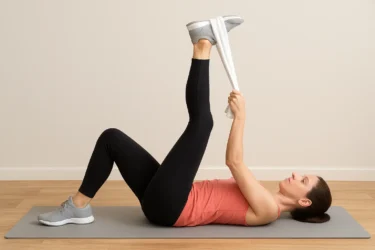
Bend your knees and lie down flat on the floor. Your head and chin should be at the same level. Then, raise one leg up, keeping the other leg bent. Try wrapping a towel around your foot and pulling the lifted leg towards yourself. Try to stretch your hamstring muscles until they feel a bit stretched. Hold that position for at least 30 seconds. Then go back to the starting position. Perform this exercise 10 times a day with each leg.

Keep your knees bent and inhale as you lie flat on the floor. As you exhale, open one knee sideways. Bring it as close to the floor as possible. Now bring the knee back. Proceed in the same manner with the other knee. Do this five times per day. Maintain a straight body position during the exercise.

Keeping your feet apart, bend your knees in the same position. Inhale as you hold your arms straight out in front of you. Inhale slowly as you roll over your hips on your right side. Bend both knees sideways. Do the same on the other side. Repeat this exercise ten times a day, then increase to 20.
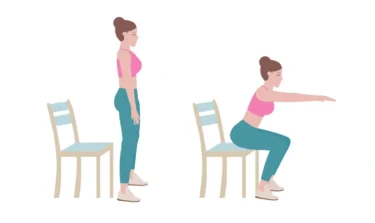
The pose helps strengthen the lower body and core. Keep your feet close together. Put your hands over your head while pressing your knees together. You should keep your thighs parallel to the floor by bending the knees as much as possible. Return to the starting position after holding the stretch as long as possible.
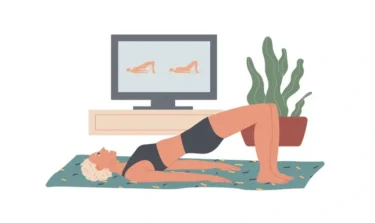
Strengthen the muscles in your stomach with this exercise. With both feet flat on the floor, lie on your back with the knees bent. Keep the shoulders down and lift the lower back off the floor. Remain in this position for as long as possible before returning to your starting position.

It strengthens the diaphragm and can benefit people affected by Hiatal hernias5. You can either sit up or lie down. One hand should go on the stomach, the other on the chest. Take a deep breath through your nose, focusing on your stomach as it rises. Focus on lowering the stomach as you breathe out through pursed lips. Repeat this a few times.

Strengthen your lower abdominal muscles by cycling your legs in the air. Lay on a slant board. You can remove excess pressure from your head and feet while exercising with slant boards. You can do bicycle leg exercises on your slant board by lifting your legs towards your chest. Stabilise yourself by holding your sides while pedalling your legs. Perform these exercises in 10 to 15-minute sessions three times every week.

It is vital to maintain a flexible abdomen to reduce the risk of hernias. Keep your knees straight while you lie flat on the floor. Keeping your back firmly on the ground, bend your legs on each side and try to touch the surface. Keep the posture in place for 5-10 seconds, then return to your starting position. Repeat the exercise on the opposite side. You should perform this stretch daily. Stretching your abdominal muscles increases their flexibility, making them less likely to weaken under pressure.

Any exercise should be performed with correct breathing. Take deep breaths from your abdomen rather than your chest. It helps release abdominal pressure by lifting the diaphragm. Your back should be on the ground. One hand should be placed on your chest, and the other on your belly. Let air enter your abdomen as you breathe through your nose. You should raise your lower hand instead of the hand on your chest as you breathe in.
To be done only after discussing with the surgeon:
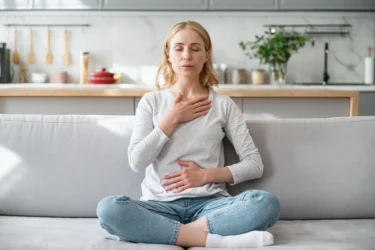
In the aftermath of surgery, it is normal to feel some pain. In particular, after abdominal surgery, deep breathing can be quite painful, which makes people breathe very shallowly. Sometimes, the inability to expand the lungs properly can lead to infections in the bottom of the lungs. You should therefore take a few conscious deep breaths throughout the day. You should also use controlled coughing to rid yourself of phlegm or sputum. To aid in coughing and clearing the lungs properly, you can hold a pillow or towel near the surgical wound to provide some support.
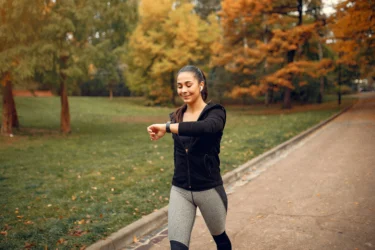
Walking around after hernia surgery is a highly recommended exercise to enhance the speed of your recovery. By doing so, you encourage your circulation to run smoothly and encourage your gut to keep working. It is important for patients to walk a little after surgery and increase the distance after recovery. Walking helps speed up recovery and prevents infection and blood clots.
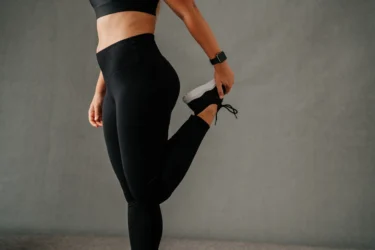
Leg exercises provide you with the strength to keep your legs mobile and prevent blood clots by keeping the circulation moving. Repeat each exercise several times to start with and increase repetitions as you get stronger.

Your core muscles will be strengthened, thus reducing the risk of hernias:
Also Read: Is It Possible to Increase Penis Size? Myths vs. Medical Facts
Certain exercises and activities should be avoided after your hernia surgery or if you have a hernia:
When exercising with a hernia, keep certain tips in mind to make sure you remain safe. One of the most important steps is to avoid the exercises listed above. As part of your exercise routine, make sure that you include aerobic exercises, glute bridges and postural strengthening exercises.
Be sure not to overdo it. You should be gentle with yourself until your hernia has recovered. If you do it correctly, exercise will help you manage your hernia better and prepare you for surgery if necessary. After surgery, it is definitely an important part of your prevention plan
You always run the risk of worsening hernias when you begin exercising. Hence, patients must seek treatment for a hernia before participating in intense exercise. Every person is different therefore, it is mandatory to discuss with your doctor the right time to begin exercises and the type of exercise one should engage in.
Also Read: Food Choices for Hernia: What to Eat and Avoid
It is safe to exercise with a hernia, however, there may be risks to making your hernia worse. If done correctly, exercise can help you cope with your hernia better6. Ensure to be careful and not overdo your exercises or perform any strenuous exercises. Consult your doctor before doing any exercise.
The benefits of exercise may help you manage many chronic health conditions and alleviate the symptoms of a hernia. However, you must be careful, as some exercises can cause strain on your affected area and may worsen your hernia.
Core exercises such as crunches, planks, sit-ups and some pilates, in other words, exercises that are more advanced, should be avoided. Performing heavy lifting exercises, including deadlifts and squats, at a high intensity, can result in your hernia getting worse. In addition, avoid sports with high impact or contact. Avoid bending down and lifting anything heavy at home.
Yes, walking is a highly recommended exercise for a person suffering from a Hernia. You can go for short walks unless advised otherwise by your doctor.
Disclaimer: The information provided here is for educational/awareness purposes only and is not intended to be a substitute for medical treatment by a healthcare professional and should not be relied upon to diagnose or treat any medical condition. The reader should consult a registered medical practitioner to determine the appropriateness of the information and before consuming any medication. PharmEasy does not provide any guarantee or warranty (express or implied) regarding the accuracy, adequacy, completeness, legality, reliability or usefulness of the information; and disclaims any liability arising thereof.
Hernia is a condition that occurs when an internal organ or tissue pushes through a weak spot or region in the covering muscle or tissue that is supposed to contain it. For example, one of the most common types of hernias is when the intestines (internal organs) push through the lower abdominal muscle wall (surrounding tissue). This produces a bulge in the lower abdominal area1.
A hernia may not be serious immediately, but many hernias tend to worsen with time and will require surgical intervention. Anybody can get a hernia regardless of age or gender, although it may be more common in older adults and those who are overweight. Most hernias occur within the abdominal cavity, between the chest and the hip.
It produces a noticeable lump or bulge that can be pushed back in or that can disappear when lying down. Laughing, crying, coughing or straining during a bowel movement or physical activity may make the lump reappear after it has been pushed in. Speak with a doctor immediately for an appropriate diagnosis.
A hernia can be caused by several reasons. The weakening of the enveloping tissues or other muscles due to ageing, strain, obesity, or birth defects can make it easier for internal organs to push through1.
Risk factors for hernia may also include pregnancy, being overweight, straining when going to the toilet, forceful and regular coughing, or giving birth. Additionally, some hernias may be caused after a surgical procedure, while other hernias, such as hiatal hernias, do not have causes that are fully understood.
This is the most common hernia. The inguinal canal goes from the abdominal region to the lower groin. The weakening of tissues in this region may cause the intestines or tissue from inside to push through and create a bulge at the top of the inner thigh2.
A femoral hernia is a rare type of hernia in the groin region that occurs over the femoral canal in the upper thighs. This type of hernia is more likely in older women3.
When the tissues or muscles near the belly button (navel) become weakened, the internal tissue can push through and make a bump in that area. This is known as an umbilical hernia. If the hernia is detected above the navel but below the breastbone, it is known as an epigastric hernia. This hernia may be noticed more often in young children4.
Inside your body, your digestive organs, like the intestines, are kept separated from the upper chest cavity due to the diaphragm. The diaphragm is a muscle within your chest that keeps the organs separate and organised, but sometimes the diaphragm can become weakened, damaged or have defects from birth. This leads to parts of the stomach pushing through and entering your chest region, known as a hiatal hernia. In some people with severe defects, not only the stomach but multiple organs from the tummy region are free to push into the chest area. This is called a diaphragmatic hernia5.
Incisional hernias occur at the site of an incision or cut, usually made for surgical purposes. After the surgery, the body may not heal the muscle tissue properly, which may lead to a weak point developing. This makes it easier for a bulge to form and the internal organs to push through. Some types of incisional hernias are called ventral hernias6.
Avoiding too much straining of your abdominal muscles after abdominal surgery and allowing your muscles to heal completely goes a long way to prevent the development of a hernia.
Dr. Ashish Bajaj, M.B.B.S., M.D. in Clinical Pharmacology and Toxicology
A hernia can be easily noticed since they typically occur in common places and have similar symptoms. In most cases, you will need to speak with your doctor immediately after finding a hernia. Here are a few key signs to watch for:
Home remedies do not cure a hernia. These may help reduce the risk of hernia in some people. Consult a doctor for proper diagnosis and treatment of a hernia.
Do not try any exercise or home remedies without your doctor’s consent.
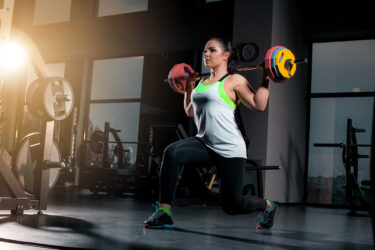
One of the main causes of hernia is strenuous exercise or overexertion. If you are engaged in heavy exercises, cut back and perform easy workouts. People who have suffered from hernia before should refrain from lifting heavy weights7. Some of the following exercises can help reduce the hernia:
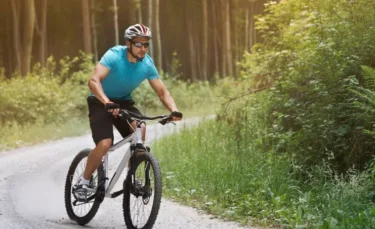
Light cycling may be considered safe for people with smaller hernias and may also strengthen your muscles. If cycling is causing you more pain, then it should be avoided completely.
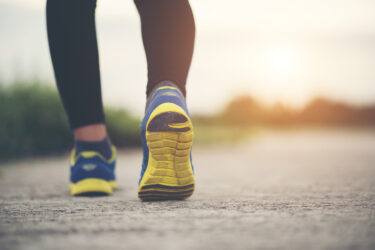
Walking is one of the most beneficial and simple exercises to perform and comes with many health benefits. Walking will generally not put additional strain on your hernia, depending on where it is.

Swimming can relieve a lot of pressure, strain, and pain due to the buoyancy of the water. Speak with your doctor and find out whether this exercise is appropriate for you. You will need to avoid strenuous laps and focus on gentle pool wading to get any benefit from this exercise.

Yoga may also support abdominal muscle strength, similar to the previously mentioned abdominal exercises. Avoid any yoga poses that increase your pain and discomfort, as this may worsen your hernia.
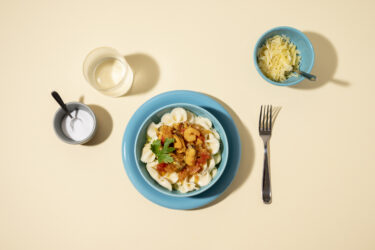
Smaller meals can be effective in decreasing the symptoms associated with hernias that involve the intestines. The less pressure you put on your stomach internally, the easier it is for you to digest your food. This will ensure that your digestive system is not under stress, which may benefit you by limiting your hernia pain.
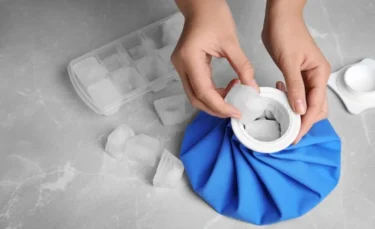
An ice pack8 on the hernia will act as a quick inflammation reliever when your hernia is causing too much discomfort. Always cover the ice with a soft cloth and do not leave it on for long periods.
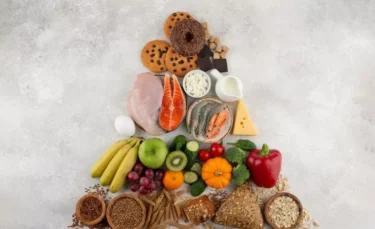
With more fibre, your stools will be easier to pass and you won’t need to strain. Softer stools can also decrease the risk of constipation.

Obesity and being overweight may increase your risk of a hernia or worsen your condition if you already have one. The more you weigh, the more pressure is placed against your muscle walls. Speak with your doctor about safe ways to lose weight9.
Home remedies for hernia only help in strengthening the muscles and preventing repeat herniation post-surgery. Surgery is the primary treatment for hernia.
Dr. M.G. Kartheeka, MBBS, MD(Pediatrics)
Also Read: Home Remedies for Jaundice By Dr. Siddharth Gupta
If your hernia is not causing you any symptoms like pain or bowel issues, your doctor may not immediately recommend surgery. However, in most cases, a hernia will be accompanied by several serious symptoms that require immediate medical attention. Consult a doctor if you notice the following:
Hernias usually become larger and more severe with time. A strangulated hernia is when the hernia bulge cannot be pushed back inside and becomes trapped within the muscles. This is a dangerous complication. Most hernias are surgically fixed by putting the internal organ back in its place and then strengthening the weak or damaged muscle tissue. Do not delay treatment.
Also Read: 8 Best Home Remedies For Piles
If you suspect that you might have a hernia, speak with your doctor immediately. Even if you do not yet have any symptoms, your doctor will need to monitor your situation and plan for your future. Hernias can be extremely painful to manage and live with. Luckily, there are several surgical options available. Be sure to check with your doctor what instructions you need to follow to manage your hernia before and after surgery.
Also Read: Food Choices for Hernia: What to Eat and Avoid
Most hernias occur due to a combination of two factors occurring at the same time: internal pressure of the organs and tissues and the weakening or opening of muscles or other tissues. This leads to the internal tissue pushing through the outer protective layers and creating a bulge that is easily visible.
The first signs of a hernia are usually a bulge, swelling or bump in the belly, upper and inner thighs, or upper groin that is accompanied by sharp pain in some cases.
A hernia is usually a serious issue unless it is small. Even small hernias eventually turn into serious medical conditions; however, larger ones typically require urgent medical attention and will have more painful symptoms.
No, most hernias do not go away on their own and will require some kind of medical attention eventually.
Hernia often requires surgery to prevent complications such as strangulation or obstruction, but some cases can be managed non-surgically depending on the type, size, and symptoms. Consulting a healthcare professional is essential for an accurate diagnosis and treatment plan.
Yes, hernias can cause pain, especially when the affected area is under strain or pressure. The pain can vary from a dull ache to a sharp, intense discomfort, and it may worsen with activities like lifting, coughing, or bending.
Yes, hernias can cause constipation, particularly if they obstruct part of the intestine. This can lead to difficulty passing stool, abdominal bloating, and discomfort. If you experience these symptoms, it’s important to seek medical advice.
Yes, hernias can affect pregnancy. The increased pressure in the abdomen during pregnancy can exacerbate an existing hernia or contribute to the development of a new one. It is important for pregnant women with hernias to consult their healthcare provider for appropriate management and monitoring.
Hernias typically do not directly cause weight loss. However, if a hernia leads to complications such as intestinal obstruction or severe pain, it may result in reduced appetite or difficulty eating, which could contribute to weight loss. It’s important to seek medical advice if you experience unexplained weight loss along with hernia symptoms.
A hernia occurs when an internal organ or tissue pushes through a weak spot or tear in the surrounding muscle or connective tissue. This can be caused by factors such as heavy lifting, chronic coughing, obesity, or strain during bowel movements.
A hernia often feels like a noticeable lump or bulge in the affected area, which can be accompanied by discomfort or pain, especially when lifting, bending, or coughing. The pain can range from a dull ache to a sharp, severe sensation.
Hernias can sometimes be managed without surgery through lifestyle changes, such as avoiding heavy lifting and maintaining a healthy weight, or using supportive devices like trusses. However, surgery is often recommended to prevent complications and provide a definitive solution.
Yes, hernias can recur even after surgical repair. Factors such as the strength of the repaired area, the patient’s overall health, and postoperative activities can influence the likelihood of a hernia reoccurring.
Hernias themselves do not cause cancer. However, in some cases, a hernia may obscure an underlying tumour or cancerous growth, leading to delayed diagnosis. It’s important to consult a healthcare professional if you notice any unusual symptoms or changes in the area of a hernia.
While hernias themselves are not typically life-threatening, complications such as strangulation or obstruction, where blood supply to the herniated tissue is cut off, can be serious and even life-threatening if not treated promptly. Seeking medical attention for symptoms of a hernia is important to prevent complications.
There can be a genetic component to hernias, as certain inherited factors may predispose individuals to weakened abdominal muscles or connective tissues, increasing the risk of developing a hernia. However, lifestyle factors such as heavy lifting, obesity, and chronic coughing also play significant roles.
While hernias primarily manifest as a noticeable lump or bulge in the abdomen, they can sometimes cause referred pain, including back pain. This may occur if the herniated tissue presses on nerves in the abdomen or affects the alignment of the spine, leading to discomfort in the back or surrounding areas.
1. InformedHealth.org [Internet]. Cologne, Germany: Institute for Quality and Efficiency in Health Care (IQWiG); 2006-. Overview: Hernias. [Updated 2023 Dec 13]. Available from: https://www.ncbi.nlm.nih.gov/books/NBK395554/
2. Hammoud M, Gerken J. Inguinal Hernia. [Updated 2023 Aug 8]. In: StatPearls [Internet]. Treasure Island (FL): StatPearls Publishing; 2025 Jan-. Available from: https://www.ncbi.nlm.nih.gov/books/NBK513332/
3. Goethals A, Azmat CE, Adams CT. Femoral Hernia. [Updated 2023 Jul 31]. In: StatPearls [Internet]. Treasure Island (FL): StatPearls Publishing; 2025 Jan-. Available from: https://www.ncbi.nlm.nih.gov/books/NBK535449/
4. Holt AC, Bamarni S, Leslie SW. Umbilical Hernia. [Updated 2024 Feb 27]. In: StatPearls [Internet]. Treasure Island (FL): StatPearls Publishing; 2025 Jan-. Available from: https://www.ncbi.nlm.nih.gov/books/NBK459312/
5. Smith RE, Sharma S, Shahjehan RD. Hiatal Hernia. [Updated 2024 Jul 17]. In: StatPearls [Internet]. Treasure Island (FL): StatPearls Publishing; 2025 Jan-. Available from: https://www.ncbi.nlm.nih.gov/books/NBK562200/
6. Hope WW, Tuma F. Incisional Hernia. [Updated 2023 Jun 12]. In: StatPearls [Internet]. Treasure Island (FL): StatPearls Publishing; 2025 Jan-. Available from: https://www.ncbi.nlm.nih.gov/books/NBK435995/
7. Pathak S, Poston GJ. It is highly unlikely that the development of an abdominal wall hernia can be attributable to a single strenuous event. Ann R Coll Surg Engl. 2006 Mar;88(2):168-71. doi:10.1308/003588406X95093. PMID: 16551411; PMCID: PMC1964073. Available from: https://www.ncbi.nlm.nih.gov/pmc/articles/PMC1964073/
8. Koç M, Tez M, Yoldaş O, Dizen H, Göçmen E. Cooling for the reduction of postoperative pain: prospective randomized study. Hernia. 2006 Apr;10(2):184-6. doi:10.1007/s10029-005-0062-2. Epub 2006 Jan 24. PMID: 16432641. Available from: https://pubmed.ncbi.nlm.nih.gov/16432641/
9. Dietz UA, Kudsi OY, Gokcal F, Bou-Ayash N, Pfefferkorn U, Rudofsky G, Baur J, Wiegering A. Excess body weight and abdominal hernia. Visc Med. 2021 Aug;37(4):246-253. doi:10.1159/000516047. Epub 2021 Apr 28. PMID: 34540939; PMCID: PMC8406351. Available from: https://www.ncbi.nlm.nih.gov/pmc/articles/PMC8406351/
Disclaimer: The information provided here is for educational/awareness purposes only and is not intended to be a substitute for medical treatment by a healthcare professional and should not be relied upon to diagnose or treat any medical condition. The reader should consult a registered medical practitioner to determine the appropriateness of the information and before consuming any medication. PharmEasy does not provide any guarantee or warranty (express or implied) regarding the accuracy, adequacy, completeness, legality, reliability or usefulness of the information; and disclaims any liability arising thereof.
Next Page »